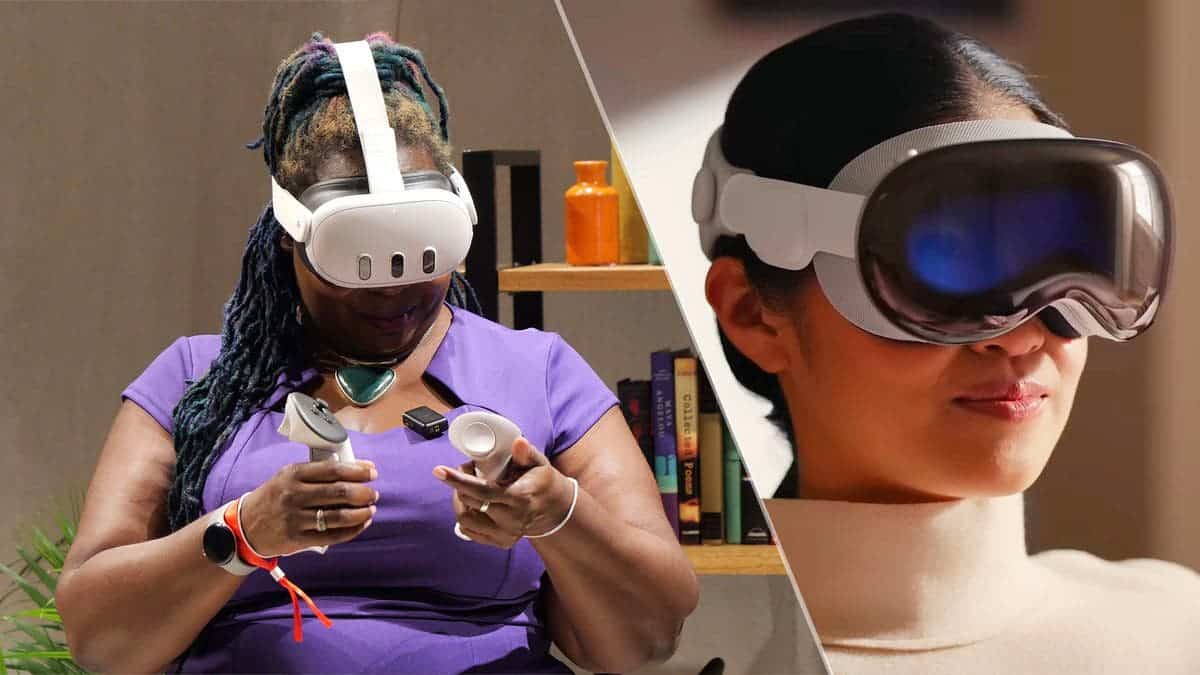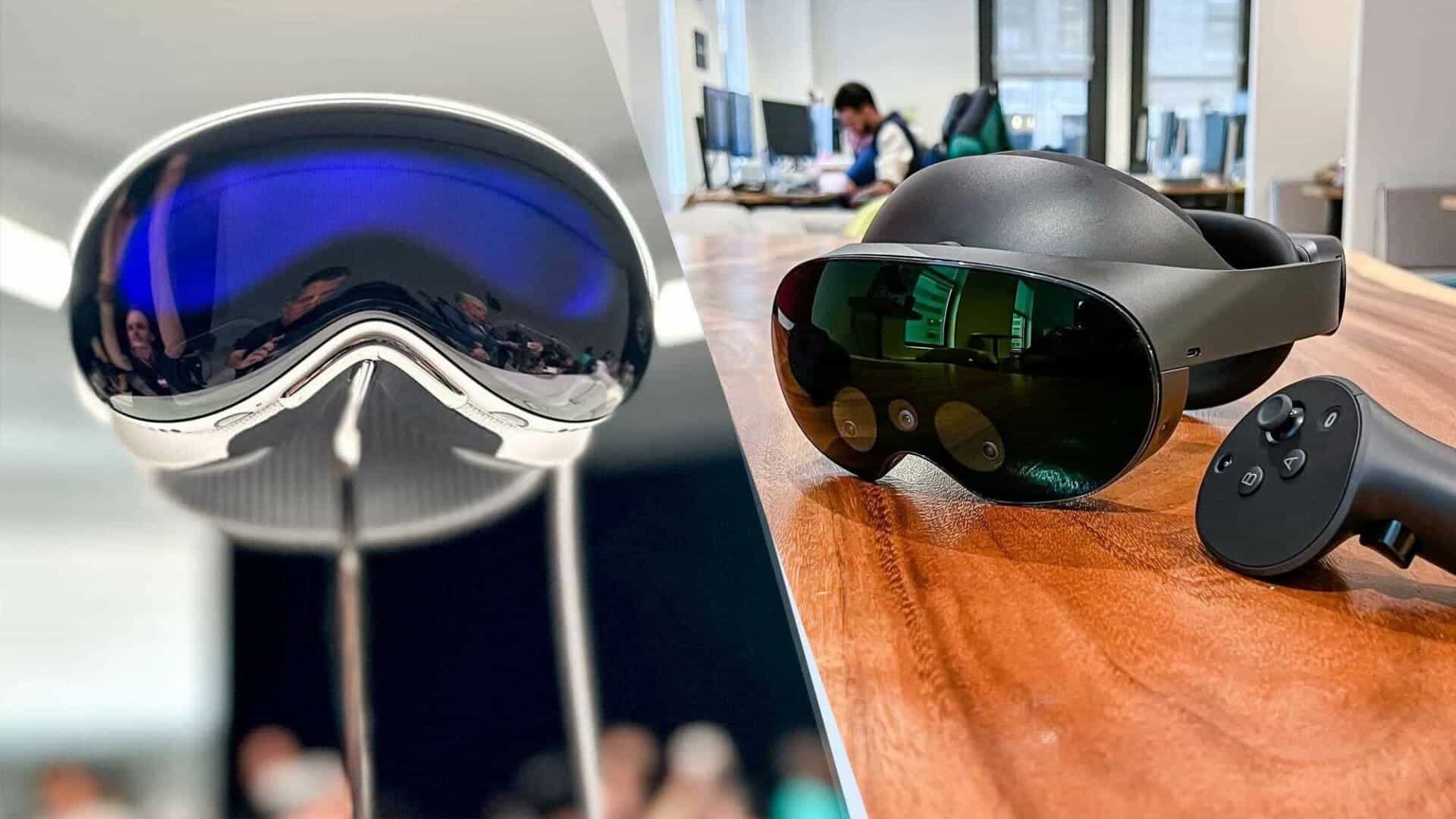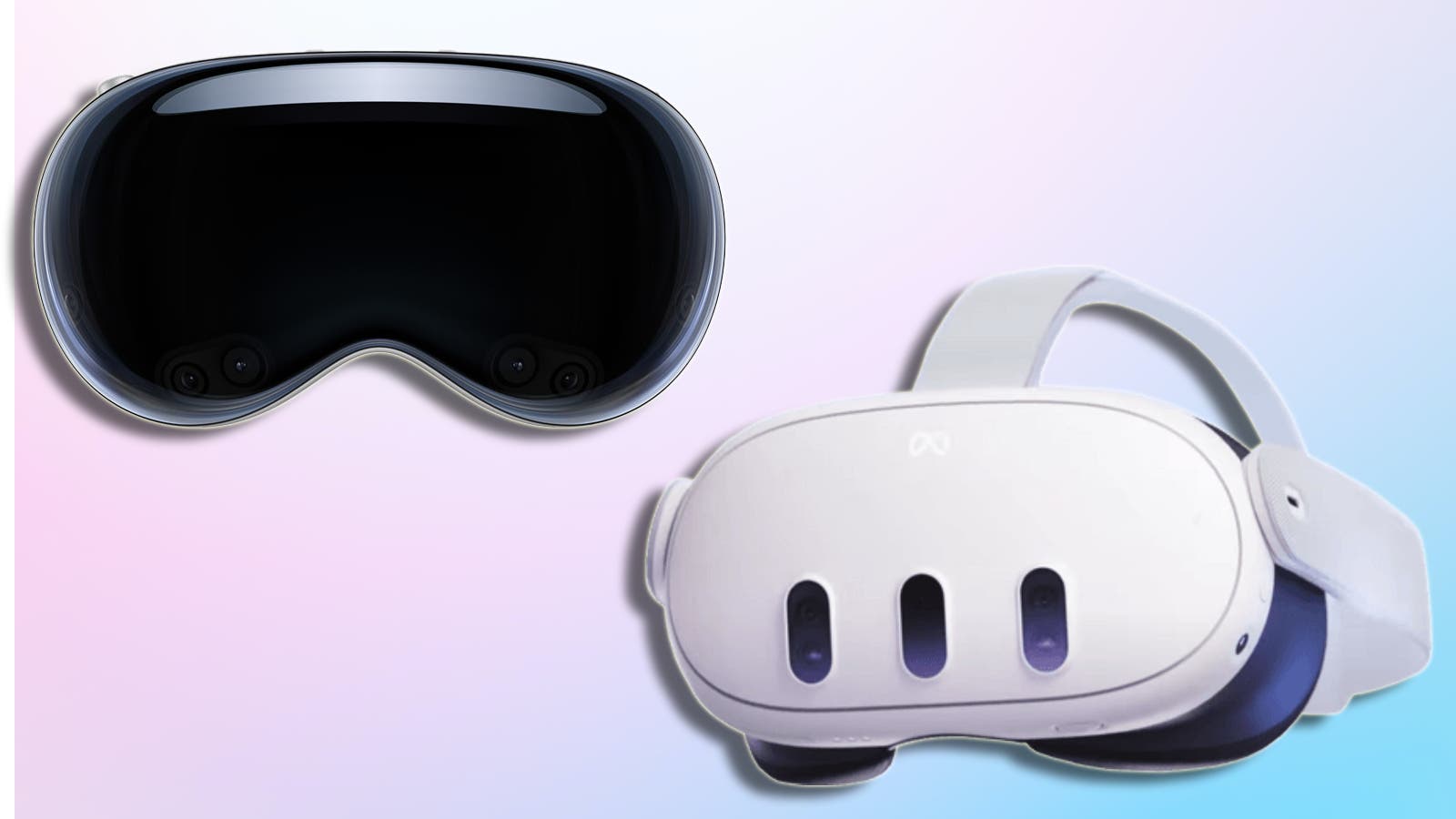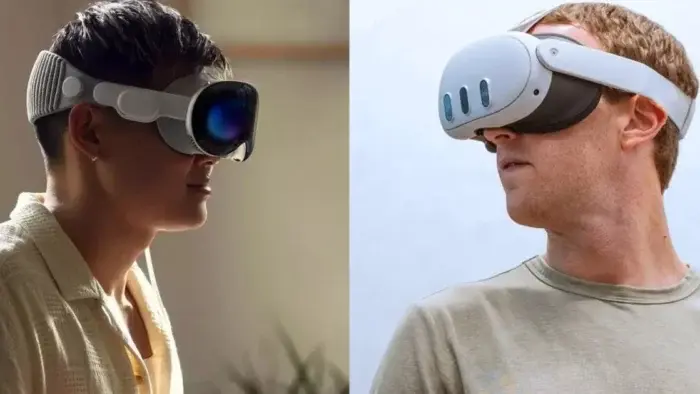Meta’s Quest 3 VR headset comes at a much lower cost compared to Apple’s Vision Pro, and despite not grabbing as much attention, the Quest 3 quietly outperforms Apple’s high-end spatial computer in several aspects.
The debate over the superiority of VR headsets has sparked contention on social media, with a couple of users arguing that Meta’s popular and affordable headset has an edge over the Vision Pro, offering comparable performance at a fraction of the price.
Three Ways the Quest 3 Outshines the Vison Pro
There is no denying the Apple’s Vision Pro headset is one of the best out there. It beats a lot of VR headsets with quite a lot of features that could lure you towards Apple even if you aren’t a fan of Apple products. However, it has a few shortcomings that could also make you reconsider your decision. Fortunately, the Quest 3 seems to step in whenever the Apple Vision Pro falls short.
Meta Quest 3 vs Vision Pro VR Gaming 
When it comes to VR gaming, there’s a clear distinction. Meta has consistently produced the best-selling VR headsets for several years, with a primary focus on gaming. The company has invested significantly in the VR industry, encouraging developers to create games for the Quest platform despite its initially smaller user base.
One notable advantage of Quest headsets is backward compatibility. This means the Quest 3 can run games designed for the Quest 2 and the original Quest, providing access to a growing library of games dating back to 2019. With hundreds of VR-specific games available, users can enjoy a diverse range of experiences in immersive 360-degree environments with surround sound.
In contrast, the Vision Pro has a limited selection of VR games. Vision Pro owners can play iPad games within large flat windows, and while Apple Arcade offers an extensive library of interactive content, it may not match the variety and depth of the VR gaming experience offered by Meta’s Quest series. This affects gameplay due to limitations on certain actions and movements.
The Vision Pro’s spatial games face limitations that could pose challenges for porting many existing VR games to Apple’s headset. Notably, issues arise concerning tasks like aiming, pulling a trigger, and navigating beyond physical walls without a dedicated VR controller with thumbsticks.
It’s anticipated that a major game studio may develop a VR controller for the Vision Pro to complement a compelling spatial game, addressing these limitations. However, this solution might take several months to materialize.
While the Vision Pro boasts impressive processing power and graphics quality, it currently falls short of the Quest 3 in terms of functionality due to the unresolved challenges mentioned above.
Meta Quest 3 vs Vision Pro Display and Optics 
Apple tends to be selective about the specifications it discloses, similar to not providing the iPhone’s battery capacity but rather offering expected runtime. While this might not concern many users as long as they are satisfied, having access to such details would be beneficial for comparisons.
Regarding the Vision Pro, some users have expressed concerns about the smaller-than-expected Field of View (FoV). FoV measures how much of your view is filled by a VR headset’s display and whether any dark edges are visible from the interior. Humans have a wide visual range, averaging over 200 degrees horizontally, with the central 100 to 120 degrees being crucial for depth perception. A VR headset with a broad FoV enhances the sense of immersion in a virtual world.
Quest 3 has a Better FoV than the Vision Pro
The Quest 3 boasts a horizontal FoV of 110 degrees, minimizing the visibility of screen edges. In contrast, some reviewers, like Marques Brownlee on YouTube, have noted a black border around the display in the Vision Pro. While this is not an issue for everyone, there is a general consensus that Meta’s Quest 3 offers a better FoV.
The Vision Pro excels in central clarity, featuring more than twice the resolution of the Quest 3. This higher resolution proves beneficial for tasks such as reading small print or examining still images in detail. The enhanced resolution is a prominent feature of the Vision Pro and contributes to its higher price point.
The Vision Pro employs micro-OLED displays, offering a wider dynamic range compared to the LCD panels in the Quest 3. However, there are trade-offs with OLED technology. When there is movement, some experienced VR users have observed noticeable persistence in the Vision Pro’s display, resulting in a bit of motion blur.
While the Vision Pro delivers exceptional image quality, there are specific areas where Meta’s Quest 3 emerges as the winner.
Meta Quest 3 vs Vision Pro Pricing 
Value is indeed subjective, but many would agree that the Meta Quest 3 holds a substantial advantage in this category. It is considered by many as the best VR headset ever made, especially considering its affordability and the reputation of being produced by the world’s leading VR manufacturer.
The Vision Pro comes with a hefty price tag of $3,500, making a significant impact on your budget. In contrast, the Quest 3 is designed for broader accessibility with its $500 price point. The Quest 3’s affordability suggests that Meta may have little to no profit margin on this device.
Beyond the cost factor, the Quest 3 proves versatile in handling many tasks similar to those assigned to the Vision Pro. Whether you want to view multiple browser windows or watch videos while cooking a meal, both VR headsets offer such capabilities.
When it comes to connecting to your Mac for tasks like scanning or printing, both the Vision Pro and Quest 3 offer solutions. Apple provides a window to your Mac with the Vision Pro, while Meta offers up to three windows via Horizon Workrooms when you install the macOS app on the Quest 3.
In terms of entertainment, the Vision Pro can play 3D movies and 2D Apple Arcade games with a gaming controller. Similarly, the Quest 3 supports 3D movies and can connect to Xbox Cloud with a gaming controller for 2D games.
However, the significant difference lies in the realm of VR gaming. The Quest 3 outshines the Vision Pro with its extensive library of VR games and compatibility with SteamVR when connected to a VR-ready gaming PC. Apple’s spatial games selection is currently limited, and catching up to Meta in this area may take years.
Editor’s Recommendation
If you prioritize the best features regardless of cost, the Apple Vision Pro might be the preferable choice. Its unmatched eye tracking, hand gestures, navigation, and image quality provide a unique and innovative experience in the VR space.
However, for those who don’t already own a VR headset and find the Vision Pro’s $3,500 starting price to be a barrier, the Quest 3 is a fantastic option. With a price tag of just $500, it offers a great introduction to the possibilities of a mixed-reality headset.
For current Quest 3 owners, it may be challenging to justify the substantial expense of upgrading to the Vision Pro. Moreover, the Quest 3, pricing at just $500, outperforms the Vision Pro in certain aspects, leaving you with a significant budget for other expenditures.
Nevertheless, the choice still remains on the end user and the exact features they may be looking for. If your demands solely depend on the Apple ecosystem, you may have to squeeze out $3,499.00 to get the Vision Pro. Else the Meta Quest 3 remains the best choice for an overall VR experience.





